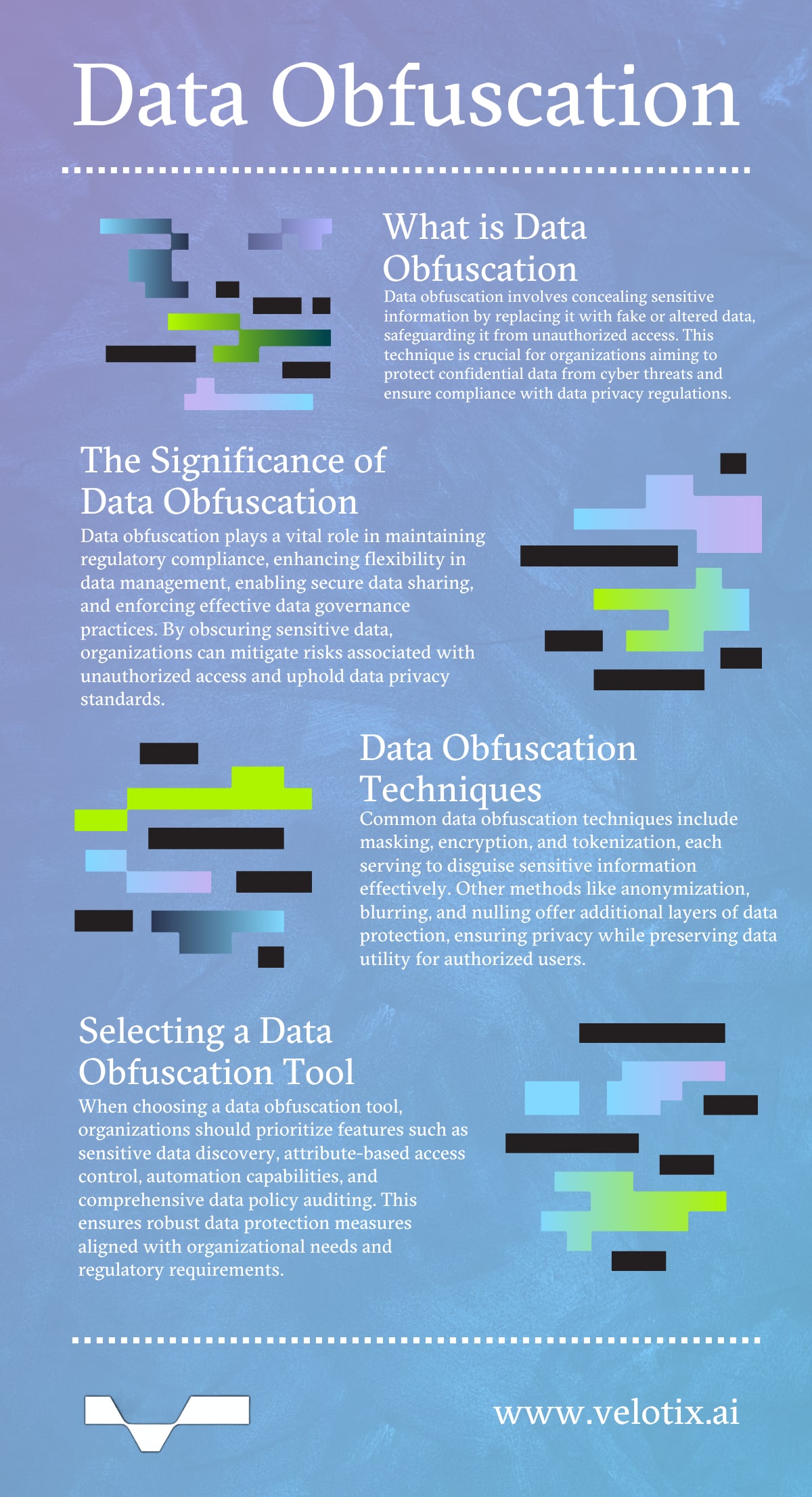Obfuscate: to make something obscure, unclear, or unintelligible.
Data obfuscation exchanges personally identifiable information (PII) with data that looks real but isn’t, a technique that protects sensitive information in non-productive databases.
Any organization that collects and retains people’s personal information is responsible for ensuring that data doesn’t get into the hands of unauthorized third parties, including cyber thieves. Surveys show that the number of records exposed by data breaches continues to grow yearly, with over three-quarters the result of hacking. Seventeen percent of breaches originate in-house.
Standard cyber security solutions and data management policies are not keeping up with those intent on stealing PII. Data obfuscation tools add another level of security, rendering data useless, even if a network is breached. This glossary covers the benefits of obfuscating data, its various techniques, and why it’s crucial to protecting data integrity.
What is Data Obfuscation?
Data obfuscation is an effective way to protect an organization’s confidential information. However, because a determined hacker can circumvent individual obfuscation methods, it’s typically recommended that organizations use several techniques to make it as challenging as possible for bad actors or unauthorized users to access or understand PII.
Organizations can obfuscate data in multiple ways, including encryption, tokenization, and masking (see below). Understanding how each one works ensures businesses choose the best methods for their unique needs.
Benefits of Data Obfuscation
Data obfuscation is used to protect PII from unauthorized access by internal or external forces and to make it more difficult for attackers to exploit system vulnerabilities. Implementing data obfuscation offers numerous benefits, including:
- Regulatory compliance. Obfuscation helps businesses comply with international data privacy laws, including the EU General Data Protection Regulation (GDPR), Digital Services Act (DSA), and Digital Markets Act (DMA). These regulations require companies to take whatever steps necessary to protect their customers’ and employees’ private data.
- Flexibility. Data obfuscation is highly customizable, enabling organizations to easily choose which data fields should be masked.
- Data sharing. Obscuring data prevents unauthorized access but still allows authorized individuals to view and/or use the information.
- Data governance. Data governance is the framework of processes applied to an organization’s entire data lifecycle. It begins when data is “ingested” and ends when it’s deleted. If non-production environments don’t require personal data access, it’s best to keep sensitive information concealed and use access restrictions to protect the business from potential risks.

The Role of Data Obfuscation in Data Privacy
Various data obfuscation techniques are used to disguise sensitive information, safeguard data privacy, and minimize the risk of unauthorized data access. It enables organizations to balance data utility and privacy protection while facilitating accountable data handling and compliance.
Data Obfuscation Techniques
There are numerous data obfuscation tools and methods, but the three most often used are:
- Masking changes specific values within data to ensure privacy. It is essentially a false piece of information that’s structurally identical to the original data. This makes it difficult for hackers to interpret the data without knowing the specific rules that were used.
- Encryption is typically used to encrypt data before transmission or storage. It’s extremely secure and, once applied, makes it impossible to manipulate or analyze the data until it’s decrypted.
- Tokenization transforms sensitive data into random strings of numbers, letters, and symbols known as tokens. Tokens have no meaningful value and only authorized users can connect them to the original data.
Other data obfuscation methods include:
- Anonymization alters or removes identifiable data characteristics like names, addresses, and social security numbers, ensuring individuals and entities cannot be directly identified.
- Blurring involves adding a new number that’s similar but not the same as the original one. For instance, a bank might change the dollar amount of funds in an account to a random value within ten percent of the original figure.
- De-identification removes or transforms PII without eliminating the data’s usefulness or analytical value. Organizations can continue to use and share data for analytics, research, and other purposes without compromising privacy.
- Non-deterministic randomization is the replacement of actual values with random ones within defined parameters that ensure the value remains valid.
- Nulling replaces original values with symbols that represent null characters, such as ####-####-####-1234 for a credit card number.
- Repeatable masking replaces an existing value with a random value. However, original values are always mapped to the same replacement values.
- Shuffling changes the order of digits in a code that doesn’t necessarily have a meaning.
- Substitution replaces original numbers with a value from a closed dictionary of values. For example, one name might be replaced with another randomly selected one from a list of 10,000 possible choices.
When choosing a data obfuscation tool, select one that, at a minimum, supports sensitive data discovery and classification, attribute-based access control, automation, and data policy auditing.